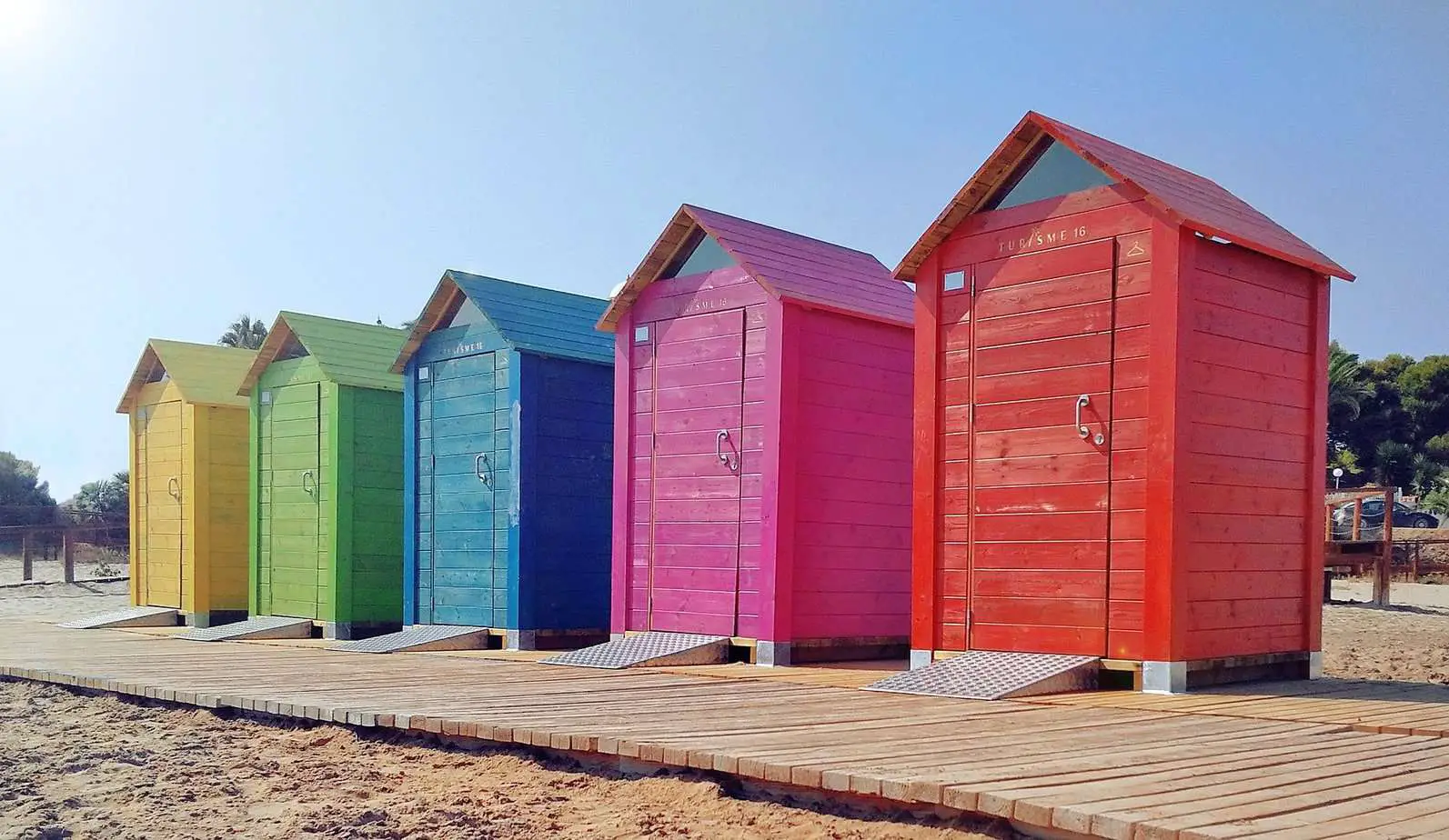The best shed paint colors and wood stains both have their advantages, but the ultimate goal is to protect your shed from the elements.
The goal of any shed covering such as paint or wood stain is to protect the construction materials from the elements. Moisture, humidity, wind, and cold can degrade a shed over time. It is essential to protect a shed with paint or some sort of sealant.
This article discusses the difference between the best shed paint, wood stain, and other ways to protect your shed from the elements.
What Is the Best Wood Stain for Sheds?
Different wood stain brands and types are used for different kinds of wood; interior, exterior, overall, water-based stains, stains with sealant, stains for pressure-treated wood, etc.
Best Overall Wood Stain
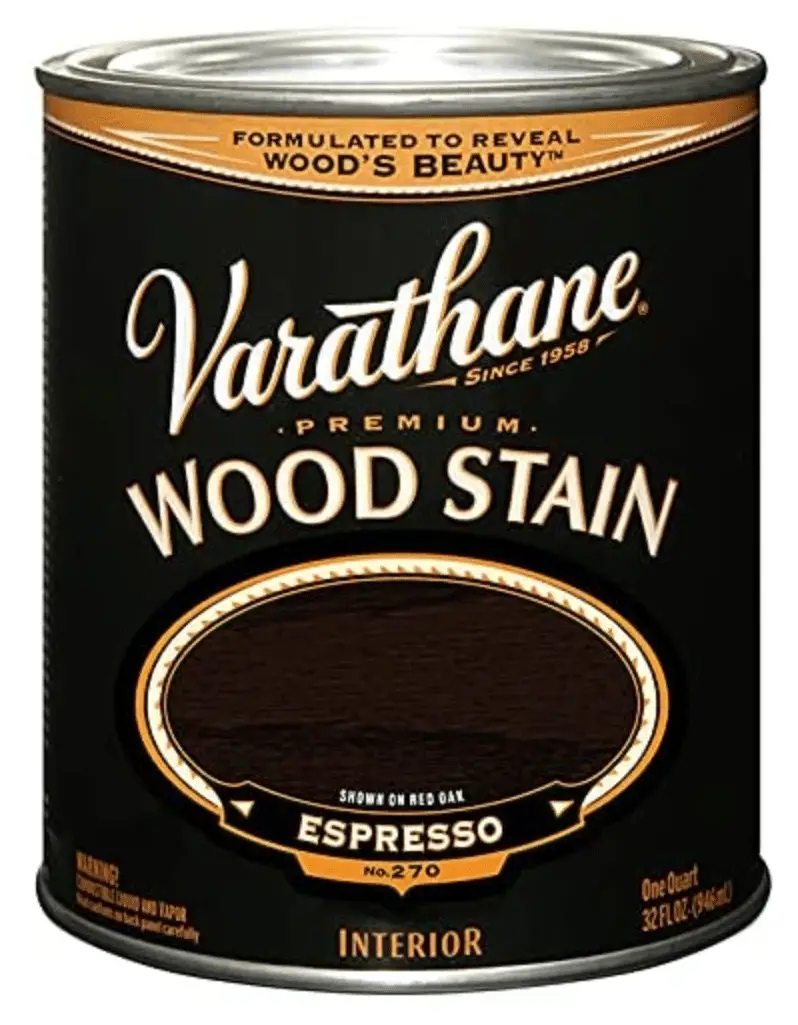
The best overall wood stain is Varathane 1 qt. Classic Wood Interior Stain. This wood stain “delivers a beautiful color with just a few coats, while enhancing the natural wood grain of your material.”
Best Wood Stain for Interior
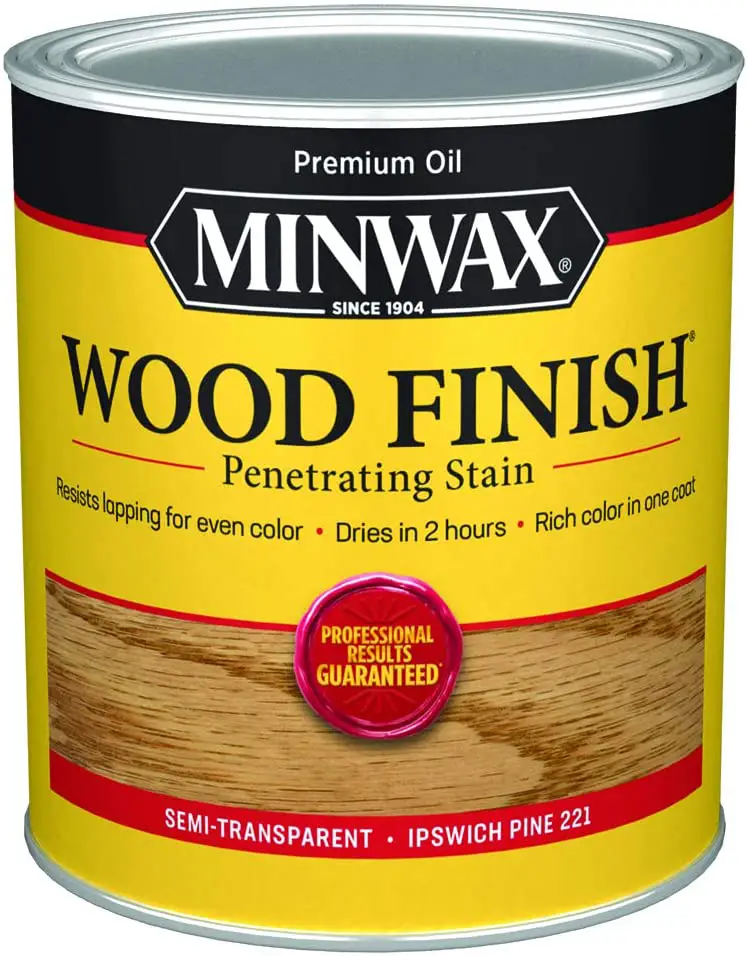
The best wood stain for interior, according to The Spruce is Minwax Wood Finish Oil-Based Interior Stain. This interior oil-based strain of stain dries in 2 hours and you can choose from several finishes.
Best Exterior Wood Stain
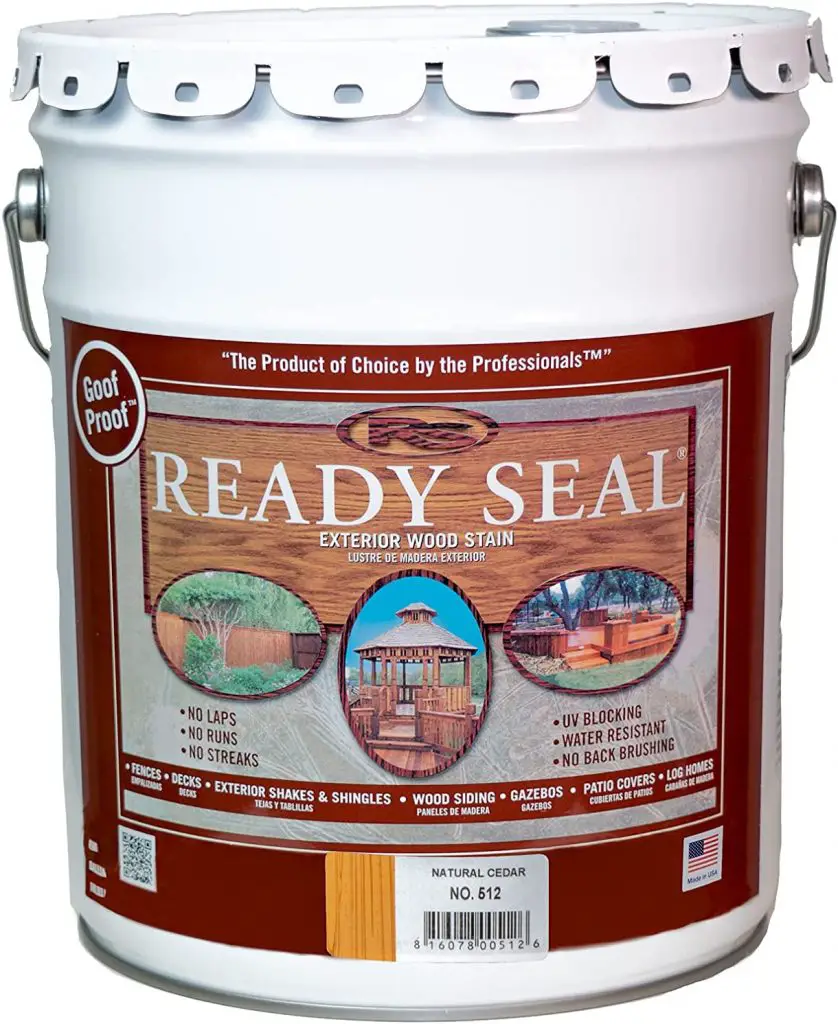
The best exterior wood stain is Ready Seal Stain and Sealer for Wood. This stain is great at protecting wood from mildew, fungus, mold, and UV rays. It has a durable finish and is easy to apply.
Best Wood Stain For Pressure Treated Wood
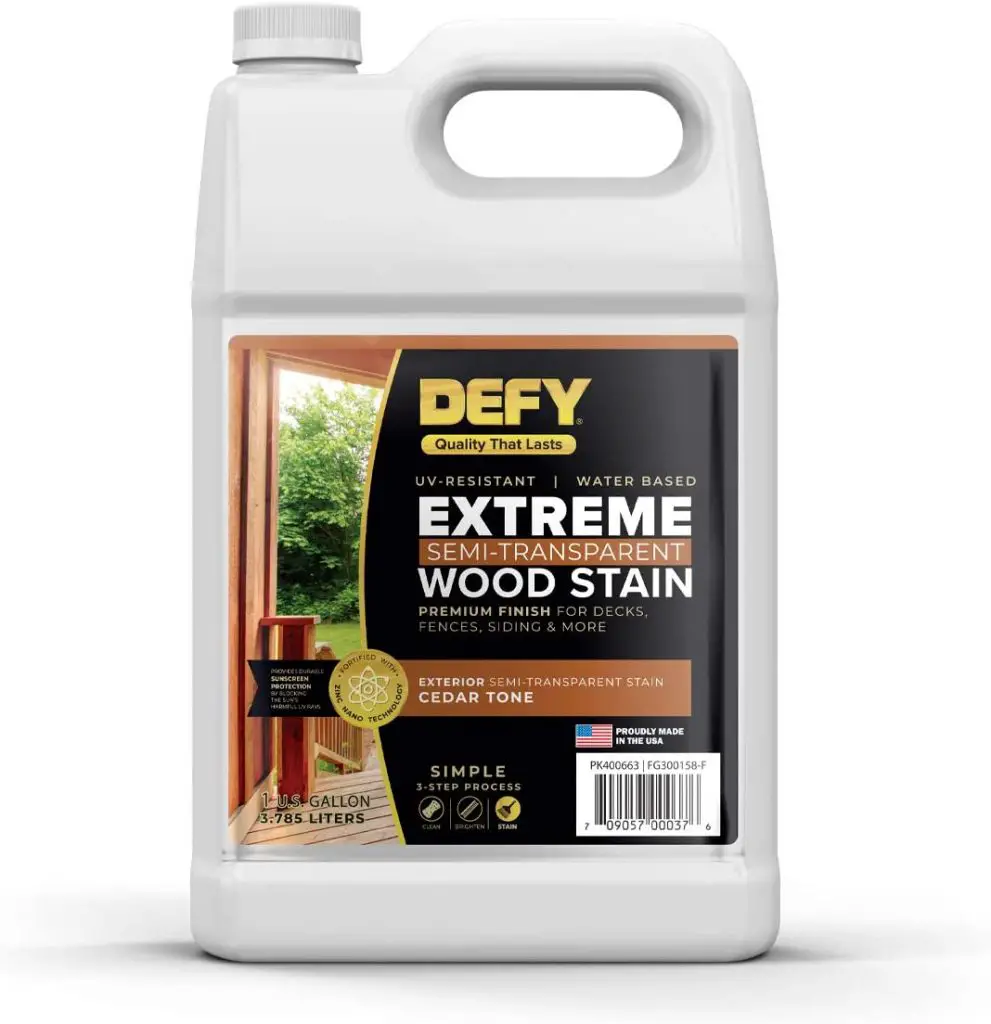
For pressure-treated wood DEFY Exterir Wood Stain is the best stain. This water-based stain is based on zinc which helps protect wood from the sun and elements. It’s semi-transparent and will protect your shed’s color over time.
Best Water-Based Wood Stain
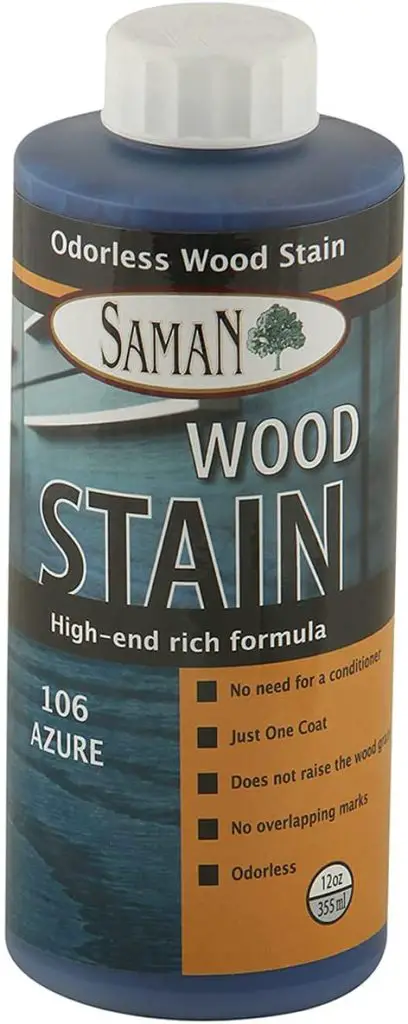
The best water-based stain is SamaN Interior Watr Based Stain. It goes on with 1 coat, is odorless, and is great to use on the interior. It’s easy to use and it comes in a wide range of colors.
Best Stain Plus Sealant Combo

The best stain with sealant is BEHR Premium Wood Stain and Sealer. It allows you to color, finish, and protect your exterior – and it provides a waterproof finish.
Best Wood Stain with Color
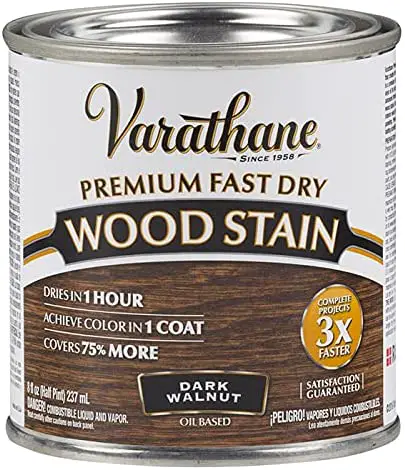
The best stain with colors is Varathane Fast Dry Interior Wood Stain. This stain comes in many fun colors, but some traditional ones, as well. It goes on with 1 coat and is oil-based.
Best Wood Finishing Cloths

And lastly, the best wipes stain is Minwax Wood Finishing Cloths, Very easy to use, great for small projects, and you can choose from several popular shades.
Once you have sanded and stained, wipe down your shed with finishing cloths, wait an hour, then wipe with a soapy cloth. Your shed will shine like new.
Is It Better To Stain Or Paint A Shed?
Both painting and staining have their pros and cons, but these are all really just wood decorations. The only thing that will really keep your wood from rotting is good drainage – which usually means installing a gutter.
Wood will get wet every time it rains or snows, and that’s okay, as long as the rain and snow “shed” effectively (pun intended) and let the wood dry out. Rotting wood becomes a problem when the wood stays wet because there’s no effective way for the snow and rain to shed.
Wood staying wet through days of sunshine and wind is an ideal place for fungus to grow, accompanied by rot. These organisms that will attack the wood require constant moisture for survival.
The advantage of using a wood stain is that it’s a very breathable medium, allowing the wood to gain moisture and let the moisture out with time. Staining is also more budget-friendly, as stain runs between $20 and $35 per gallon, while the cost of paint is often double that much.
With painting, you also have to use wood preservative ($15 to $40 per gallon) and primer ($15 to $30 per gallon). Wood stains already contain a preservative and a primer, so you don’t have to waste money on this.
Aside from the budgetary benefits, staining will also give your shed a more natural look. It will partially fill the pores in the wood and form a thin layer over your shed – this will let both the natural grain pattern and the cracks in the wood show. Paint will fill these pores fully, hide the cracks, and cover the distinct wood grain – which looks more manufactured than natural.
Stain is also easy to apply.
You will certainly need to clean your shed before staining it, and the same goes for painting, then you’ll be able to apply the stain with a roller. Taking this and comparing it to paint: before painting you need to clean your shed, treat it with a wood preservative, and coat it with a quality primer.
You’ll also need to add at least two coats of paint, compared to only a single layer of stain needed when staining. Also, there’s no need to seal the surface with a clean polyurethane sealer after staining it – this is, however, something that you have to do when painting.
There are, in fact, some points that need to be assigned to the paint.
Firstly, paint lasts longer than stain. Paint can last for 10 years or longer before requiring reapplication, with oil-based paints providing the best protection from moisture, and latex-based paints providing the best protection against UV-related fading. Staining, however, usually lasts less than 8 years, and is prone to fading away, while paint is rather prone to chipping and peeling.
Paint also offers more variety. There’s literally any color of paint you can choose for your shed. Staining, however, is reserved for clear varieties or shades of brown.
Paint is also easier to maintain than stain.
Paint will usually stick to a slick surface and it won’t be easy for dust, debris and dirt to stick – it will be easy to clean it. Stain, however, provides more of matte finish – meaning that it will take more effort to clean. Using a pressure cleaner won’t solve this, as it can damage both the wood and the stain on it. It’s also smart to deep-clean your shed at least once a year, just to make sure there’s not any mold or fungus developing.
However, none of this will matter if you haven’t protected your shed with proper drainage and airflow. This is the first and the most important line of defense against mold and fungus.
What Paint Should I Use To Protect My Shed?
Chemistry has definitely come to the point where you can rely on the product itself to keep your wood protected, so you can trust that the manufacturers of the paint or stain you’re choosing know what they’re doing.
Make sure to take your own needs and conditions of your shed into advisement when making a decision about your paint, even if you make a mistake when choosing, you’re always going to have the option of redoing your walls when painting.
